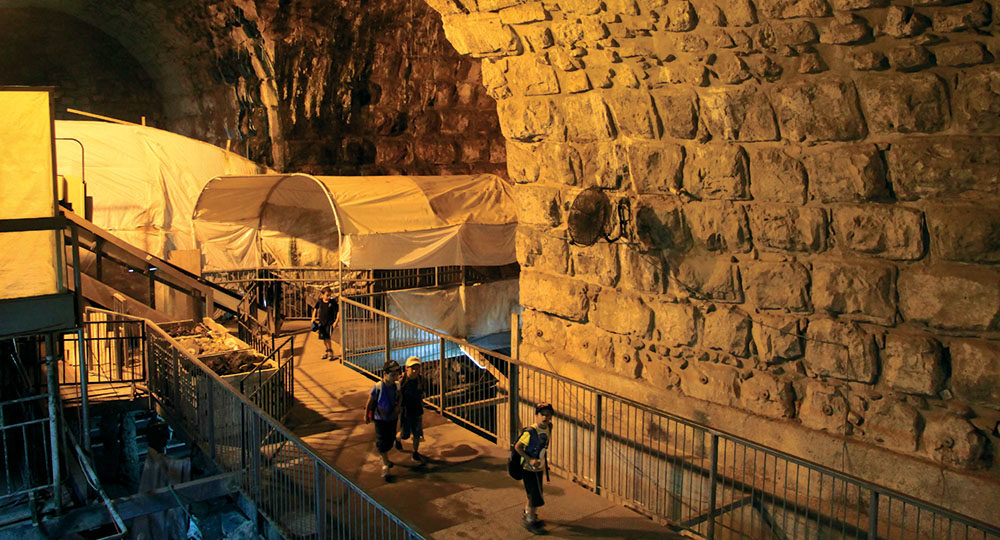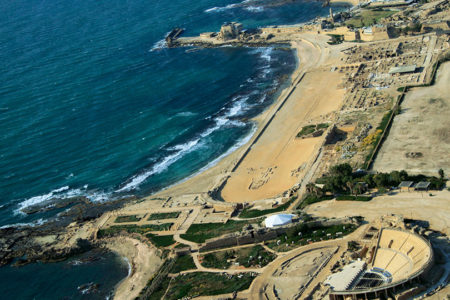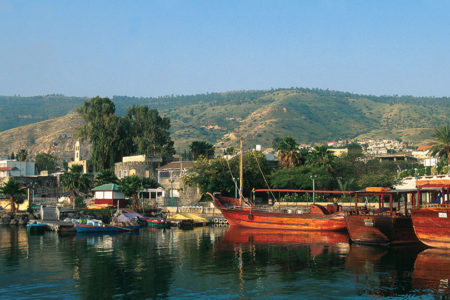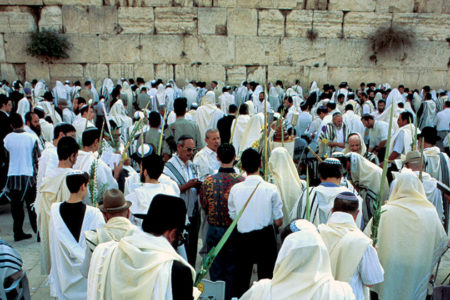The Temple Tunnel
Above ground the Western Wall, or Kotel, measures around 187 feet long. But it actually runs another 1,350 feet underground, beneath homes in Old City Jerusalem. For centuries the wall was left unexplored, buried beneath the ruins of the second Temple destroyed by the Romans in AD 70 and built on through the years.
After the Israelis won the Six-Day War in 1967, Orthodox rabbis under the Ministry of Religious Affairs began a project to tunnel north of the Kotel to search for archaeological evidence of the Holy of Holies and Ark of the Covenant. The result is a subterranean passageway that helps tourists better understand the scope of the ancient Jewish Temple.
The project was tricky due to concern for the structural integrity of the Muslim-owned homes above ground. A mistake (cave-in) not only would have been dangerous but also politically explosive.
In 1982 workers broke through an ancient gate and found several chambers. When they reached the north end of the wall, they connected with a water tunnel from the Hasmonean dynasty (140 BC–37 BC). The area is now officially known as the Hasmonean Tunnel.
Visitors to the tunnel enter from the Kotel plaza. After a short, high-tech presentation of the Temple Mount history, the amazing walk along the Western Wall begins.
One immediately notices the wall’s massive stone blocks, each weighing several tons. One Herodian stone stands out from the rest. Measuring 41 feet long, 11.5 feet high, and 15 feet wide, it weighs an estimated 600 tons (1.2 million pounds).
Two thousand years ago slaves cut and moved these huge stones, using a sophisticated pulley system. They cut them on-site and moved them into place, using no mortar or cement. The Western Wall truly is a structural marvel.
The tunnel was finally opened in 1988. For the first eight years, all tours proceeded north the length of about four football fields. Tourists walked through the narrow passageway all the way to where the excavation stopped. Since there was no exit at the north end, they had to turn around and walk back the same way.
This situation limited the number of daily tours the tunnel could accommodate. Israeli officials, however, were reluctant to build a door at the north end because it would open in the Muslim quarter. Since the Dome of the Rock is close by, any Israeli action, even building a door, could have been misinterpreted as aggression and led to violence.
In September 1996, Prime Minister Benjamin Netanyahu rejected such sentiment and ordered an exit door built, reasoning that it would facilitate tourists, as well as benefit Arab businesses when the tourists exited.
Unfortunately, then Palestine Liberation Organization Chairman Yasser Arafat and other Palestinian leaders did not care about the potential boost to business and encouraged Palestinian protests. The riots caused the most severe violence in the area since the Six-Day War.
Today use of the exit door is contingent on the political climate, which is always in a state of flux. Either way, walking through the tunnel is a thrilling, thought-provoking experience. The opportunity to touch stones placed there 2,000 years ago and to realize the Messiah of Israel could have seen them as He walked, talked, and taught never ceases to amaze and inspire.







